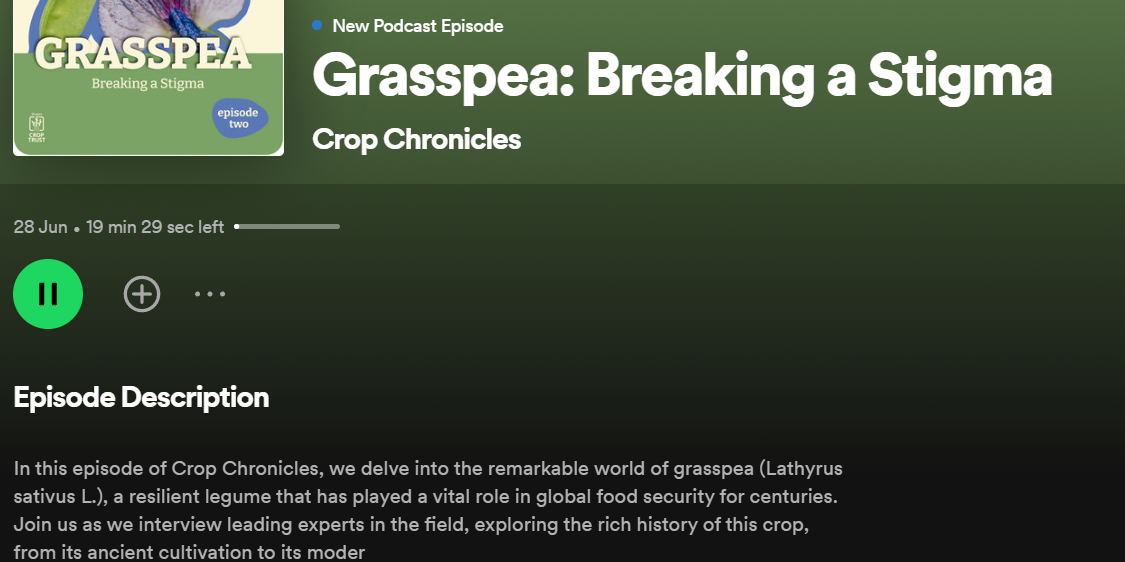Grasspea, a leguminous plant, has been cultivated for centuries, particularly in the regions where adverse soil conditions and challenging climates pose a threat to the growth of other crops. However, the course of its history took an unexpected turn when unforeseen events cast a shadow over its reputation. This is the story of the grasspea, a hardy plant that played an important role during times of adversity such as European famines, World War II and Bengal famine. In the midst of global turmoil, when food sources were short and hope for nutrition was dwindling, grasspeas appeared as a ray of hope. Traditional crops failed under the challenging conditions of war and famine, leaving people hungry. However, grasspea has proven its incredible ability to grow in the harshest of environments, offering a lifeline for many people in need of food. Day after day, meal by meal, people turned to grasspea as their newfound source of nourishment. As other crops struggled to survive under unpredictable climatic change and variability, grasspea hold its ground even under extreme drought and waterlogging.
In some instances, this ability of grasspea to survive under harshest conditions has been associated with the presence of beta-N-oxalyl-L-alpha, beta-diaminopropionic acid (ODAP) in its plant parts and seeds. However, ODAP has been associated with lathyrism, a neurological condition which manifest paralysis of the lower limbs in under nourished populations, if consumed consistently over a longer period. In recent years, there has been a renewed interest in grasspea for its adaptation in fragile agro-ecosystems. Ongoing endeavors to develop low-toxin or toxin-free grasspea varieties are aiming to harness their positive attributes. The pressing need to revitalize a crop’s image and restore its erstwhile renown is currently being addressed through ICARDA’s BOLD project, which is funded by the Crop Trust. During the village field visit and engaging with farmers in Nepal and Bangladesh, we discovered a longstanding tradition of cultivating and consuming grasspea that dates back to generations beyond memory. This crop has been an integral part of their diet, cultivated by their fathers and forefathers. Interestingly, there have been no reported cases of lathyrism among these farmers. It was surprising for them to learn that grasspea, which has been an essential part of their sustenance, carries a negative reputation. In collaboration with our partners in India, Nepal, and Bangladesh, ICARDA is dedicated to introducing region-specific, low- or toxin-free grasspea varieties. This endeavor involves harnessing the potential of crop wild relatives and employing a conventional breeding approach to enhance and adapt the crop. The tale of the grasspea serves as a reminder of how a simple, unforeseen event can tarnish the reputation of an otherwise promising future crop. With proper understanding, awareness, and careful breeding, grasspea could potentially become a crop of choice for adaptation to changing climate.
By Akanksha Singh ICARDA-India


